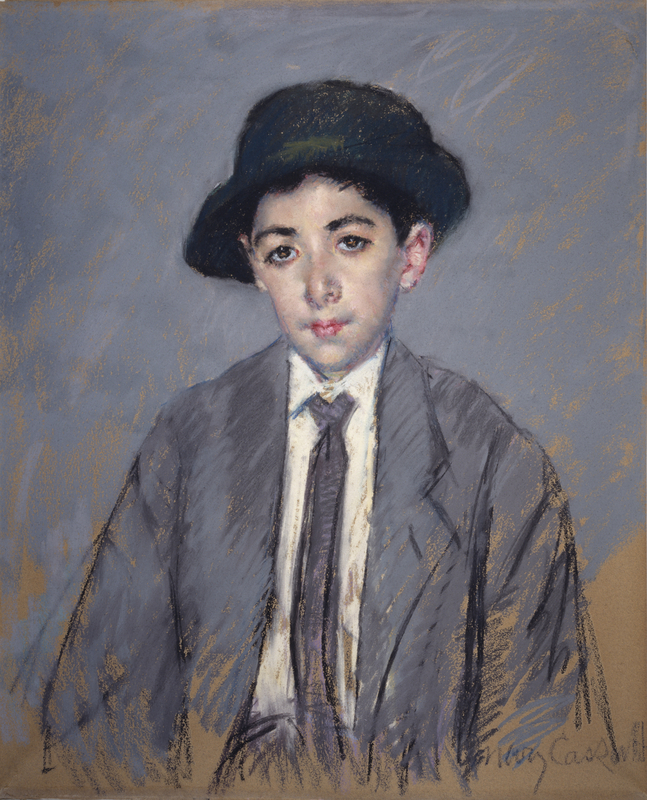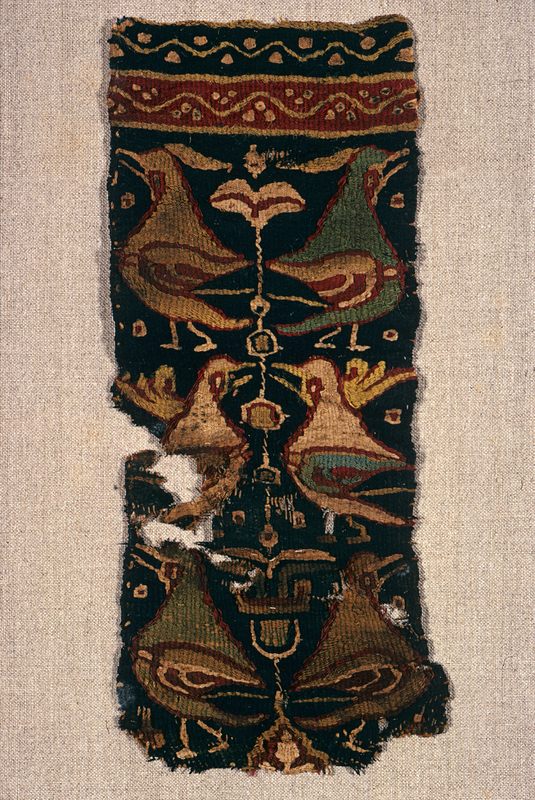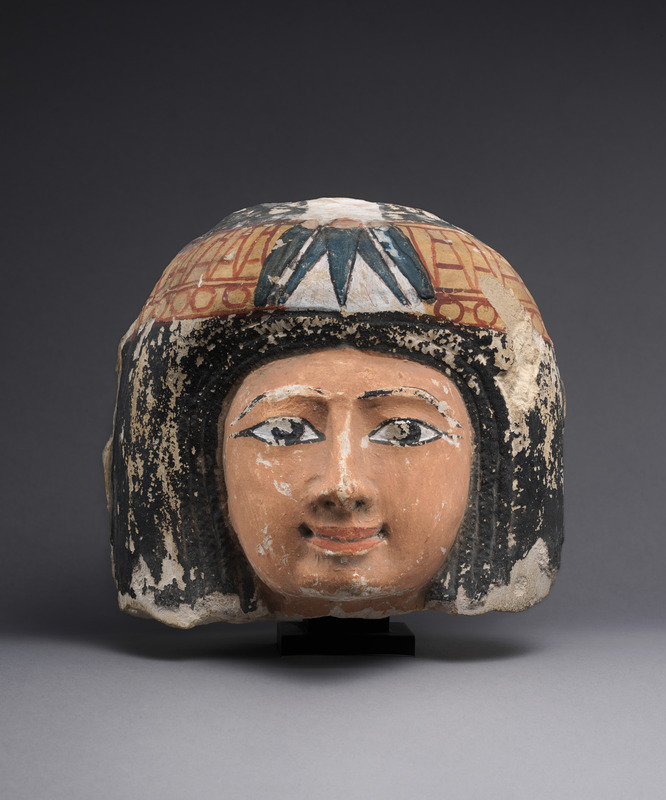History of the Tellalian Collection
The story of the Tellalian Collection, and its voyage to Boston College, is interwoven with the stories of two Armenian-American families—the Kelekian art dealers of New York City and the Tellalian collectors of Newton, Massachusetts. This page offers the broad contours of their stories.
Dikran Garabed Kelekian
Unknown Photographer
c. 1900
Public Domain
By the turn of the twentieth century, the Armenian art dealer Dikran Garabed Kelekian had swiftly become a world-renowned purveyor of Coptic, Islamic, and classical art, with shops and galleries in Paris, London, Cairo, New York City, and Istanbul.[1]
His business clients included the likes of John D. Rockefeller, Louisine and Henry Osborne Havemeyer, and Henry Walters; indeed, much from their private collections are now on display at institutions such as the Metropolitan Museum of Art in New York City and the Walters Art Museum in Baltimore, in large part due to Dikran Kelekian’s facilitation of the original sales.[2]
In old age, Dikran was painted by the likes of Milton Avery, John Graham, Hans Moller, Walt Kuhn, and André Derain. His friendships with fin de siècle artists are exemplified most, perhaps, by the fact that his son Charles was painted not once, but twice by the legendary Mary Cassatt. (Her portait of Charles, aged 10, is at the Walters and is reproduced below; her portrait of Charles, aged 8, is at the Met and may be viewed by clicking here.)
Charles Dikran Kelekian
Mary Cassatt
1910
Walters Art Gallery
Creative Commons
A New York Times article, reporting on his death in 1951, described him as “the dean of American collectors.”[3] When he died and his New York business passed down to his son Charles, the elder Kelekian’s indelible mark had been left upon not only the collections that would ultimately wind up at the Met, the Walters, and elsewhere, but also on the art world as a whole.
By the mid-1970s, Charles Kelekian had left his own indelible mark on the art market. His own 1982 obituary in the New York Times described him, like his father, as the “dean of antiquities dealers in the United States.”[4]
Meanwhile, just up Interstate-95, a Boston architect by the name of Donald Tellalian was chosen as the lead designer of a new wing of the Walters Art Museum in Baltimore, the very same museum whose collections were so indebted to the Kelekian family.[5] It was at the Walters, in 1973 during a reception honoring the successful completion of the new wing, where Donald and his wife Barbara first met Charles Kelekian, and began what the Tellalians fondly recall as a veritable “Initiation into Collecting.”[6]
Donald recalls that the museum’s executive director at the time, Dick Randall, had decided to display a selection of Armenian manuscripts as part the reception honoring the new wing. Dick introduced Donald and Barbara to Charles, and here, at this celebration of new architecture and Armenian culture, the Tellalians received an invitation to visit the Kelekian family business in New York.[7]
Walters Art Museum
Baltimore, Maryland
Photograph by Eli Pousson
Creative Commons
Upon the occasion of the Tellalian donation to Boston College, Donald wrote the following about their first encounter at the Kelekian dealership in New York City in the mid-70s:
About a year later, intrigued by the man, his reputation, and our high level of curiosity, we did indeed seek out [Charles] Kelekian Ancient Arts. Checking the addresses on Madison Avenue, we did discover #667. Down a second floor corridor, we knocked on a plain wood door with an eye hole. The door opened and we were warmly greeted by Mr. Kelekian. While familiar with antiquities through international travel and exposure to museum collections, we were nevertheless overwhelmed by the four small galleries filled with Greco-Roman sculptures, architectural fragments, Egyptian Fayoum portraits, old German painted wood panels. But unlike a museum, you could touch and, if so inclined, purchase and take home![8]
This was the material experience of doing business with the Kelekians—an unassuming set of rooms down a sixth-floor hallway in an anonymous building in the heart of Manhattan, filled with beautiful objects of near and far antiquity. It was the legacy of the international dealing empire that Dikran had spent a lifetime building, and that Charles had worked to continue.
Fragmented Tapestry Roundels
5th-6th century
McMullen Museum of Art
Public Domain
But it was not the statuary that enticed the Tellalians, and Charles knew it. He took the husband and wife pair into yet another back room, and opened a nondescript drawer, this one filled with late antique textiles from Egypt. Donald recalls that after seeing this drawer, and after a period of study at the Boston Public Library, he was reminded of “the close historical affinity between the Armenian Apostolic and Coptic Orthodox Churches,” and he and Barbara decided to revisit the Kelekian dealership in 1978.[9] It was during this visit, on 25 November, that the Tellalians bought the first objects in their collection, which are now categorized as McMullen 2018.2 and McMullen 2018.3.[10]
Tapestry Fragment with Six Birds
7th-8th century
McMullen Museum of Art
Public Domain
Over the years, Donald and Barbara grew their collection, acquiring textiles mostly from the Kelekian business but also from auction houses such as Sotheby’s and Skinner. When Charles died in 1982, his daughter, Nanette Kelekian, took over the business, and she did not share the same passion for art dealing that her father and grandfather had epitomized. Fortunately for the public, Nanette spent the next few decades donating her family’s manifold objects and artworks, such as the “Head of a Woman” displayed below, to various institutions such as the Met, the Walters, and the Harvard University Art Museums. (Indeed, “Gift of Nanette Kelekian” is one of the more common phrases found in the credit lines of American museums to this day).
Head of a Woman
c. 1250–1070 BCE
Metropolitan Museum of Art
Public Domain
After maintaining and preserving an extensive collection in their Newton home for three decades, the Tellalians approached McMullen Museum of Art’s director Nancy Netzer in 2008 and mentioned their many decades of collecting and cataloguing Egyptian textiles.[11] Later, the McMullen asked them to lend many of their textiles to a major joint exhibition in 2014 and 2015 between the Yale University Art Gallery and the McMullen Museum, entitled “Roman in the Provinces: Art on the Periphery of Empire.”[12] Although some of the Tellalian collection had been lent to other museums before,[13] this event represented its largest ever exhibition, placing many of the textiles alongside glass, mosaics, coins, sculpture, and other objects from the later Roman Empire’s periphery.[14]
In 2018, the Tellalians graciously donated most of their collection to the McMullen’s permanent collection, where the textiles live today.
Antique Coptic Textiles in McMullen Museum
Interview with Nancy Netzer
Boston College Libraries
21 September 2018
[1] Marianna Shreve Simpson, “‘A Gallant Era’: Henry Walters, Islamic Art, and the Kelekian Connection,” Ars Orientalis 30 (2000): 94-97.
[2] For Rockefeller’s purchases from Kelekian, see Luiza DeCamargo, “Content and Character: Dikran Kelekian and Eastern Decorative Arts Objects in America” (Thesis, Washington, D.C., The Smithsonian Associates and the Corcoran College of Art and Design, 2012), 51-52. For references on Rockefeller and the Havemeyers, see Simpson, “‘A Gallant Era’,” 108 n.3. For the Walters Museum of Art, as well as an excellent overview of the business and personal relationship between Walters and Kelekian, see Simpson, “‘A Gallant Era.’”
[3] Meyer Berger, “Kelekian Plunges 21 Floors to Death: Authority on Near East Art Was Friend of Collectors and Artists for 50 Years,” The New York Times, January 31, 1951.
[4] Rita Reif, “Charles Dikran Kelekian, 82, Major Dealer in Ancient Art,” The New York Times, January 18, 1982.
[5] Donald Tellalian, “An Initiation Into Collecting,” 1. (McMullen Museum of Art, Boston College, 2018, unpublished manuscript), typescript.
[6] Tellalian, “An Initiation,” 2.
[7] Tellalian, “An Initiation,” 1.
[8] Tellalian, “An Initiation,” 1.
[9] Tellalian, “An Initiation,” 1-2.
[10] Tellalian, “An Initiation,” 2.
[11] Nancy Netzer, interview by Nina Bogdanovsky, “Antique Coptic Textiles in McMullen Museum,” Boston College Libraries, YouTube Video, 4:15 ff., 21 September 2018, accessed 25 April 2022. https://youtu.be/BHc6Ch5pKM8.
[12] See Brody and Hoffman, Roman in the Provinces: Art on the Periphery of Empire, passim.
[13] Netzer, “Antique Coptic Textiles,” 6:40 ff.
[14] Netzer, “Antique Coptic Textiles,” 6:57 ff.





